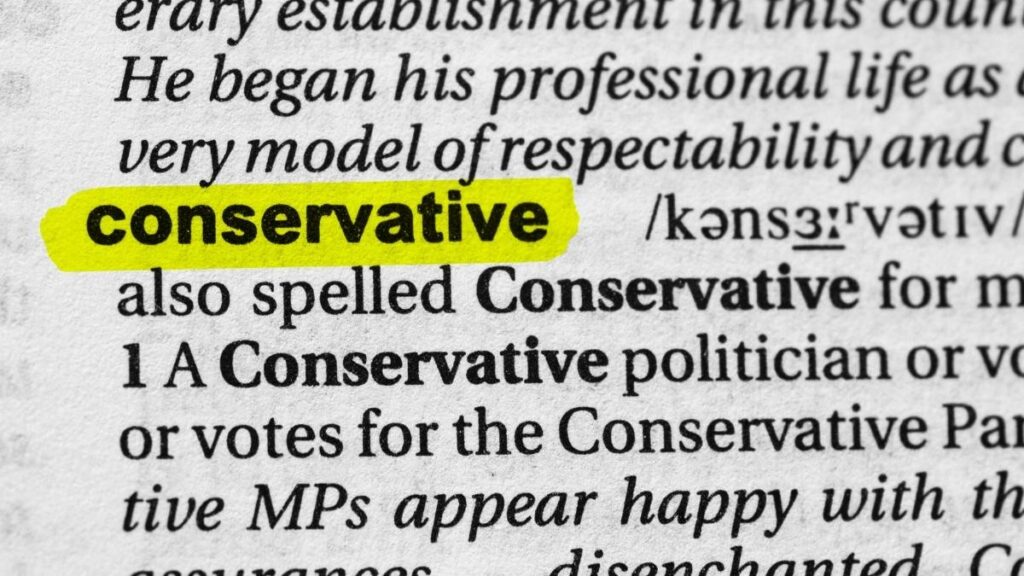The retirement rule that millions of Americans rely on was designed for a world that no longer exists—and it could cost you hundreds of thousands of dollars in retirement income.
Following the 4% rule may force unnecessary financial restrictions during your best retirement years while creating more questions than answers when life doesn’t go according to plan.
These 4% retirement rule problems are pushing modern retirement planning toward better alternatives.
You’ll discover the 8 critical flaws making this rule obsolete, current 2025 research showing actual safe withdrawal rates (3.7% to 4.7%), a superior “guardrail” strategy that could increase your income by $250,000+ over 10 years, and how to implement flexible retirement withdrawal strategies.
Fixed 4% + inflation adjustments
No market performance consideration
Dynamic adjustments based on portfolio performance
Built-in safety guardrails
Why the 4% Retirement Rule Could Leave You Broke (And What Smart Retirees Do Instead)
Are you worried about running out of money in retirement? You’re not alone. Millions of people follow an outdated rule that could cost them hundreds of thousands of dollars.

The 4% rule has been the gold standard for retirement planning since the 1990s. But here’s the problem: it was created for a different world. Today’s retirees face longer lifespans, different market conditions, and higher healthcare costs.
What if I told you there’s a better way? One that could give you $250,000 more to spend in your first decade of retirement?
Let’s fix your retirement plan.
The Shocking Truth About What Retirees Actually Withdraw
Most financial advisors still preach the 4% rule. Take out 4% of your retirement savings in year one. Adjust for inflation each year. Don’t touch the principal.

But real retirees don’t follow this rule.
Research shows most retirees withdraw closer to 2% of their savings each year. That’s half of what the rule allows. Why? They’re scared of running out of money.
Even William Bengen, the guy who created the 4% rule, doesn’t recommend it anymore. He now says 4.7% is safer based on updated research.
Morningstar’s 2025 research goes the other direction. They suggest 3.7% is the new “safe” rate. That’s even less than the original 4%.
Here’s what’s really happening: There’s a huge gap between what retirement theory says and what retirees actually do.
The psychology problem is real. Many retirees could spend way more money but don’t. One study found that people in the top 20% by net worth could spend over a million dollars more during a 30-year retirement. They’d still be fine financially.
But they don’t spend it. They hoard money out of fear.
Meanwhile, 42% of people cash out their 401(k) accounts when they change jobs. They’re not even making it to retirement with their savings intact.
Key takeaway: The 4% rule creates fear instead of confidence. Most retirees end up spending less than they could afford, missing out on experiences and lifestyle improvements.
Action step: Calculate what you’re actually comfortable spending, not what a rule tells you to spend.
The 8 Fatal Flaws That Make the 4% Rule Obsolete
The 4% rule has serious problems. Here are the eight biggest flaws:
1. The Rigidity Problem Real people don’t spend the same amount every month for 30 years. You might spend more in early retirement when you’re healthy and active. You might spend less later when you stay home more. The 4% rule ignores how humans actually live.

2. Wrong Timeline The rule assumes everyone retires for exactly 30 years. What if you retire at 55 and live to 95? That’s 40 years. What if you retire at 70 and live to 85? That’s only 15 years. One size doesn’t fit all.
3. Outdated Portfolio The original research used a 50/50 split between stocks and bonds. That made sense in the 1990s. Today’s bond yields are different. Inflation is higher. The old portfolio mix might not work anymore.
4. Historical Data Bias The rule looks at past market performance and assumes the future will be similar. But markets change. Technology changes everything. Past results don’t guarantee future success.
5. Over-Conservative The 4% rule assumes you need a 100% success rate. You can never run out of money, ever. But what if you’re okay with a 90% or 95% success rate? You could spend significantly more and still be safe.

6. Ignores Performance Your portfolio goes up and down. But the 4% rule doesn’t care. Good year? Still take 4%. Terrible year? Still take 4%. This doesn’t make sense.
7. Tax Blindness Different accounts have different tax rules. 401(k) withdrawals are taxed differently than Roth IRA withdrawals. The 4% rule pretends all money is the same. It’s not.
8. Decision Paralysis What happens when your roof needs $30,000 in repairs? The 4% rule doesn’t answer this. You’re stuck choosing between home repairs and your retirement security.
Example scenario: Your roof starts leaking badly. Repairs cost $30,000. Under the 4% rule, you either pay for repairs and mess up your withdrawal strategy, or you live with a leaky roof. Neither option is good.
Key takeaway: The 4% rule is too rigid for real life. It creates more problems than it solves.
Action step: Look for withdrawal strategies that adjust based on your actual situation, not arbitrary rules.
How the 4% Rule Could Cost You $250,000 in the First Decade
Let’s do the math. Say you have $2.17 million saved for retirement. Under the 4% rule, you withdraw $86,800 in year one.

But what if the market does well? What if your portfolio grows by 6% or 8%? Under the 4% rule, you still only take out your inflation-adjusted amount. You leave all that growth sitting there.
Here’s a real example:
- Starting portfolio: $2.17 million
- 4% rule withdrawal: $86,800 per year (adjusted for inflation)
- Alternative “guardrail” strategy: $103,200 per year average
That’s $16,400 more per year. Over 10 years, that’s $164,000 extra spending money.
But it gets better. The guardrail strategy can give you anywhere from $143,000 to $255,000 more in the first decade, depending on market performance.
Why does this happen? The 4% rule assumes worst-case scenarios. It plans for the Great Depression and 2008 financial crisis happening at the same time. But most of the time, markets do okay or even well.
You’re leaving money on the table during good years to protect against disasters that rarely happen.
Think about it this way: Would you rather have $16,000 more per year to spend on travel, hobbies, and family during your healthy retirement years? Or would you rather leave that money sitting in your account “just in case”?
Key takeaway: The 4% rule is so conservative it costs you real experiences and lifestyle improvements.
Action step: Calculate what a more flexible approach could mean for your spending power.
What Financial Experts Are Saying About Withdrawal Rates in 2025
The retirement world is changing. Even the experts who created these rules are updating their advice.

William Bengen’s Update The guy who invented the 4% rule now recommends 4.7%. He’s looked at updated market data and realized his original rule was too conservative. “I was being overly cautious,” he admits.
Morningstar’s Conservative View Christine Benz at Morningstar takes the opposite approach. Her 2025 research suggests 3.7% is safer given current market conditions. She’s worried about low bond yields and high stock valuations.
Charles Schwab’s Personal Approach Schwab now recommends personalized withdrawal rates instead of one-size-fits-all rules. They look at your specific situation: age, health, expenses, and risk tolerance.
The Inflation Problem Multiple experts call inflation “retirees’ greatest enemy.” Fixed withdrawal amounts get eaten away by rising costs. A $4,000 monthly withdrawal today might only buy $3,200 worth of stuff in 10 years.
RBC Wealth Management Research Their 2025 study shows that flexible withdrawal strategies outperform fixed strategies in 8 out of 10 market scenarios. The key is adjusting based on portfolio performance.
The Expert Consensus Most financial experts now agree on three things:
- The old 4% rule needs updating
- Flexibility beats rigidity
- Personal situations matter more than general rules
Key takeaway: Even the rule’s creator admits it’s outdated. The smartest experts now recommend flexible, personalized approaches.
Action step: Don’t rely on 30-year-old advice for your retirement planning.
The Superior Strategy: How Guardrails Work
Guardrails are like bumpers at a bowling alley. They keep you in the right lane without being too restrictive.

Here’s how it works:
Step 1: Set Your Range Instead of a fixed 4%, you pick an upper and lower limit. Maybe 3% to 6% of your portfolio value. This gives you flexibility based on how your investments perform.
Step 2: Adjust Based on Performance Good year in the market? Take closer to 6%. Bad year? Drop to 3%. Your spending adjusts to reality instead of ignoring it.
Step 3: Stay Within the Guardrails As long as you’re between your upper and lower limits, you’re safe. No stress about perfect timing or market predictions.
Real Example: You have $2.17 million saved. Your desired income is $8,800 per month ($105,600 per year).
Your guardrails might be:
- Lower bound: $1.23 million (if your portfolio drops this low, cut spending)
- Upper bound: $2.42 million (if your portfolio grows this much, increase spending)
As long as your portfolio stays between $1.23M and $2.42M, keep withdrawing $8,800 per month.
The Flexibility Factor With a $70,000 desired annual income, guardrails might let you spend anywhere from $47,000 to $117,000 depending on market performance. That’s $47,000 of flexibility compared to the rigid 4% rule.
Different Risk Levels You can set guardrails for different comfort levels:
- Conservative: 70% success probability
- Moderate: 80% success probability
- Aggressive: 100% success probability
Psychological Benefits Guardrails give you clear rules without being restrictive. You know exactly when to adjust spending. No guessing. No panic. Just clear guidelines.
Key takeaway: Guardrails give you the best of both worlds – safety and flexibility.
Action step: Calculate what your personal guardrail range should be based on your portfolio size and spending needs.
Real-World Case Study: Dave’s Retirement Transformation
Meet Dave (not his real name, but his situation is real). Dave is 62 with $1 million saved for retirement. He wants to retire now and travel while he’s healthy.

Dave’s 4% Rule Plan:
- Annual withdrawal: $40,000
- Monthly income: $3,333
- Travel budget: Maybe $500 per month
- Social Security wait: Until age 67
Dave feels restricted. He can’t do the traveling he dreamed about. He’s worried about major expenses like home repairs or healthcare emergencies.
Dave’s Guardrail Plan:
- Year 1 withdrawal: $52,000 (5.2% because markets are good)
- Monthly income: $4,333
- Travel budget: $1,500 per month
- Social Security bridge: Planned income reduction at age 70
The Difference Dave can spend $12,000 more in his first year of retirement. That’s enough for:
- A European vacation
- New car repairs without stress
- Better healthcare options
- Helping grandkids with college
Healthcare Planning Dave’s guardrail strategy includes buffer money for unexpected medical costs. If he needs long-term care, he can adjust his spending down temporarily.
Social Security Strategy Dave plans to increase his withdrawals early (ages 62-70) then reduce them when Social Security kicks in at 70. This maximizes his healthy, active years.
The Result Dave retires with confidence instead of fear. He knows he has clear rules to follow if markets change. But he’s not restricted by overly conservative assumptions.
Key takeaway: Flexible strategies let you maximize your early retirement years when health and energy are highest.
Action step: Map out your own retirement phases and adjust your strategy accordingly.
Other Dynamic Withdrawal Strategies Worth Considering
Guardrails aren’t the only alternative to the 4% rule. Here are other smart approaches:

RMD-Based Approach Use the IRS Required Minimum Distribution tables to calculate your withdrawal rate. These tables adjust for age and life expectancy. Younger retirees withdraw less, older retirees withdraw more.
Bucket Strategy Divide your money into three buckets:
- Bucket 1: 2-3 years of expenses in cash/CDs
- Bucket 2: 7-8 years of expenses in bonds
- Bucket 3: Remaining money in stocks for growth
You spend from Bucket 1 while Buckets 2 and 3 grow. Refill buckets as needed.
“Go-Go, Slow-Go, No-Go” Strategy Plan for three phases of retirement:
- Go-Go years (ages 60-75): Higher spending for travel and activities
- Slow-Go years (ages 75-85): Moderate spending as you slow down
- No-Go years (ages 85+): Lower spending but higher healthcare costs
Flexible Withdrawal Systems Set a base withdrawal amount (maybe 3%) plus performance bonuses. Good market years let you spend more. Bad years keep you at the base amount.
Bond Ladder Approach Buy bonds that mature at different times. As each bond matures, you get guaranteed income. No market timing required.
When to Consider Annuities If you want guaranteed income with zero market risk, annuities can cover your basic expenses. Then invest remaining money more aggressively.
Tools That Help
- Boldin retirement calculator: Tests different withdrawal strategies
- Morningstar retirement planning tools: Shows probability of success
- Financial advisor consultation: Personalized strategy development
Key takeaway: Multiple strategies exist. Pick one that matches your personality and risk tolerance.
Action step: Test 2-3 different strategies with retirement calculators to see which fits your situation best.
How to Implement Your New Withdrawal Strategy in 2025

Ready to ditch the 4% rule? Here’s your step-by-step implementation guide:
Step 1: Calculate Your Current Portfolio Value Add up all retirement accounts: 401(k), IRA, Roth IRA, taxable accounts, and any pensions. Get the total number.
Step 2: Determine Your Retirement Timeline When do you want to retire? How long do you expect retirement to last? Be realistic about both numbers.
Step 3: Set Your Initial Withdrawal Amount Based on your expected expenses, what do you need per year? Don’t just use 4% of your portfolio. Use your actual spending needs.
Step 4: Establish Your Guardrails Pick upper and lower portfolio values that trigger spending changes. Most people use 20-25% above and below their starting value.
Step 5: Consider Tax Implications Different accounts are taxed differently:
- Traditional 401(k)/IRA: Taxed as regular income
- Roth IRA: Tax-free withdrawals
- Taxable accounts: Capital gains rates
Plan your withdrawals to minimize taxes.
Step 6: Create Your Annual Review Schedule Set a date each year to review and adjust. Many people use January 1st or their birthday. Stick to the schedule.
Step 7: Build in Emergency Plans What happens if markets crash early in retirement? What if you have major medical expenses? Have backup plans ready.
When to Get Professional Help Consider hiring a fee-only financial advisor if:
- Your portfolio is over $500,000
- You have complex tax situations
- You’re not comfortable with the math
- You want ongoing monitoring and adjustments
Key takeaway: Implementation requires planning, but it’s not complicated once you understand the basics.
Action step: Pick one strategy and start the implementation process this month.
Your Next Steps: Stop Letting Old Rules Control Your Future

The 4% rule served its purpose in the 1990s. But you’re not retiring in the 1990s.
Here’s what we’ve learned:
- The 4% rule is too rigid for real life
- Most retirees withdraw less than they could afford
- Flexible strategies can give you $250,000 more spending power
- Current experts recommend personalized approaches
- Guardrails and other dynamic strategies work better
The bottom line: You have options. You don’t have to follow a 30-year-old rule that doesn’t fit your situation.
Your Action Plan:
- Calculate what you actually need to spend in retirement
- Test different withdrawal strategies with online calculators
- Pick a flexible approach that matches your risk tolerance
- Set up annual reviews to adjust as needed
- Consider professional help for complex situations
Don’t let an outdated rule from the 1990s dictate your retirement lifestyle. Calculate what a modern withdrawal strategy could mean for your retirement income. Your future self will thank you for taking action today.
Remember: The goal isn’t to die with the most money in the bank. The goal is to live the retirement you’ve worked hard to earn.
Take action now. Your retirement dreams are waiting.
This article is for educational purposes only and is not personalized financial advice. Consider consulting with a fee-only financial advisor for guidance specific to your situation.

